- News
- Reviews
- Bikes
- Accessories
- Accessories - misc
- Computer mounts
- Bags
- Bar ends
- Bike bags & cases
- Bottle cages
- Bottles
- Cameras
- Car racks
- Child seats
- Computers
- Glasses
- GPS units
- Helmets
- Lights - front
- Lights - rear
- Lights - sets
- Locks
- Mirrors
- Mudguards
- Racks
- Pumps & CO2 inflators
- Puncture kits
- Reflectives
- Smart watches
- Stands and racks
- Trailers
- Clothing
- Components
- Bar tape & grips
- Bottom brackets
- Brake & gear cables
- Brake & STI levers
- Brake pads & spares
- Brakes
- Cassettes & freewheels
- Chains
- Chainsets & chainrings
- Derailleurs - front
- Derailleurs - rear
- Forks
- Gear levers & shifters
- Groupsets
- Handlebars & extensions
- Headsets
- Hubs
- Inner tubes
- Pedals
- Quick releases & skewers
- Saddles
- Seatposts
- Stems
- Wheels
- Tyres
- Health, fitness and nutrition
- Tools and workshop
- Miscellaneous
- Tubeless valves
- Buyers Guides
- Features
- Forum
- Recommends
- Podcast
review
£299.00
VERDICT:
A jack-of-all-multisport-trades and master of them all too, as long as its HR monitor works for you
Sophisticated fitness tracking
Easy syncing with Strava via excellent Suunto app
Impressive battery life
Excellent GPS accuracy
Rugged looks (if that's your thing)
Heart rate monitor not as accurate as a chest strap
Weight:
66g
Contact:
At road.cc every product is thoroughly tested for as long as it takes to get a proper insight into how well it works. Our reviewers are experienced cyclists that we trust to be objective. While we strive to ensure that opinions expressed are backed up by facts, reviews are by their nature an informed opinion, not a definitive verdict. We don't intentionally try to break anything (except locks) but we do try to look for weak points in any design. The overall score is not just an average of the other scores: it reflects both a product's function and value – with value determined by how a product compares with items of similar spec, quality, and price.
What the road.cc scores meanGood scores are more common than bad, because fortunately good products are more common than bad.
- Exceptional
- Excellent
- Very Good
- Good
- Quite good
- Average
- Not so good
- Poor
- Bad
- Appalling
The Suunto 5 is a mid-range multisport watch that combines a chunky aesthetic with an intricate, feature-packed, almost complicated (especially if you don't read the manual) functionality that will set an individualised, adaptive training programme for you and track your fitness 24/7. It's only let down by a slightly unpredictable wrist-based optical heart-rate monitor – but that could be down to the shape and size of my wrist.
I'm not going to go there with the James Bond's watch comparisons, but if he were a cyclist and runner rather than a superspy he might swap the Geiger counter, laser cutter and detonator-equipped Rolex for something like the Suunto 5.
> Find your nearest dealer here
The latest multisport watches like this combine cycle computer functionality, including GPS navigation and the ability to pair with peripheral sensors via Bluetooth, with the sort of wearable technology we're now used to via devices like Fitbits – step counting, calorie burn, sleep analysis, stress and recovery status. There's a serious amount of tech packed into a unit that's just 45mm in diameter and 15.7mm thick.
However, if I were Bond I might send it back to Q for a little refinement of the heart rate monitor, because although the functionality of the Suunto 5 is expansive and impressively executed, accurate pulse measurement does play an important part in much of it, and for me it wasn't quite 'optimal' in the Suunto 5's own words. A heart rate reading that's too high or too low can skew fitness data and mean that the next workout in the adaptive training plan – if you're using it – is not properly targeted, as well as giving a a too-high training stress score in Strava.
The Suunto 5's heart rate monitor is the optical kind that takes a reading by shining light into the blood vessels in your wrist and detecting blood volume changes. It's called photoplethysmography in case you were wondering.
I tested it against the Polar H10 chest strap and found that when it was actually picking up my HR it was accurate within a couple of beats, but there were a lot of spikes and dropouts in between, especially on a run. I even shaved my wrist to see if that would make a difference, but it didn't. It was at its best and far more predictable when it was more static on my wrist during indoor cycling on Zwift (after an initial reluctance to pick up, which seemed to be the pattern with indoor cycling) or on tri-bars outdoors.
> Buyer’s Guide: 10 of the best heart rate monitors for cycling
Optical heart rate monitor performance can be athlete-dependent, so there's every possibility that it's just my (admittedly quite bony) wrist that the Suunto 5 doesn't like.
Button op
Operation is via five buttons – there's no touchscreen – and it's not the most intuitive, even though the buttons have a good-quality feel. The Garmin Forerunner 35 I was using before switching to the Suunto was much easier, with menus in more obvious places (although it is admittedly more basic). Even after a month of using the Suunto 5 I can't always go first time to the function I'm looking for.
Selecting the sport you want to record is simple enough, but if you want to configure your own metrics – for example, for my running I don't want to see actual speed; I want pace in minutes per mile – you've got to go to the phone app and create a new sport rather than editing the existing preset one. However, once you've done that, the watch remembers which sport you used last and keeps it at the top of the list for when you're next exercising.
Screen size and clarity
Although the diameter of the watch from bezel edge to bezel edge is 45mm, the screen itself is considerably smaller – I make it 29mm across. That's a shame because if you want a few metrics viewable, you've got to really squint. The majority of the watch uses 'dark mode' white text on a black background, but fortunately it's possible to set activity recording to standard black text on a light background, which helps. I still found that I needed to raise my wrist closer to my face – again, especially on a run – to see it properly, and often that would dislodge the optical heart rate monitor on a sweaty, slippery wrist, because the watch itself is fairly heavy, and the HR reading would momentarily disappear.
You can set alerts for your zones, but because of the HR monitor's frequent reluctance to play ball, I preferred to use my usual breathing pattern-based natural monitor.
Goal guidance
If you don't already have an idea of what you're training for and when you need to train, you can choose your own fitness goals and set the Suunto 5's adaptive training plan to 'maintain', 'improve' or 'boost'.
I set it to improve mine, and it seemed to be suggesting a little bit less exercise (it doesn't say exactly what kind) than the amount of cycling and running I would normally be doing, but would change according to the workout I had actually done based on my own schedule (accurate heart rate dependent).
> 10 top tips to get faster up hills
I would say for those who already know what they're doing with their chosen sports, the Suunto 5's adaptive training guidance is not that useful, but if you're not accustomed to listening to your body, it could help.
VO2max
The VO2max score the Suunto gives you seems to be based on running, and although I haven't done a lab VO2max test in well over a decade, the 53 it gave me mostly ties in with what Garmin estimates. Yes, much lower than 15+ years ago, but Suunto says that's 'superior' and gives me a fitness age of 20 so I'm not going to argue.
GPS
Apart from its ability to flatter me with a very low fitness age, its GPS performance is probably one of the most impressive aspects of the Suunto 5. Recording is absolutely spot on for distance and keeping the trace on the actual route. Plotting a route on the Suunto phone app is also incredibly simple: you just tap the various points on the route and it creates it and uploads it to the watch when it next syncs. You can view a heatmap of where other Suunto users have been or where you've been yourself.
Syncing
The syncing is something else that was really great about the Suunto 5. I would say it's better than both Garmin and Polar devices I've used and I never had a single issue with the device not being found (or the website being down). Syncing happens automatically once you've finished your activity and returned it to 'watch face' mode. Crucially, the Suunto app – which is excellent and very easy to use – links to Strava, so activities get uploaded automatically there too. Training Peaks and Endomondo are also supported.
And because of good-quality connectivity, I've enjoyed the iPhone notifications and call alerts beamed straight to my watch. Instead of hauling my phone out of my pocket only to find that the alert was for a random person giving me a Ride On for a Zwift activity I did two days ago, I can just glance at my wrist and leave the phone alone.
Battery performance
Battery life is also commendable. Doing an activity most days and wearing it at night for the sleep tracking, it manages close to a full week without needing to be charged. Charging is super-quick – a couple of hours at most and you're away again. You get an estimate of how many hours' charge are left at the beginning of an activity – the battery modes are sport mode specific – and can also have the battery percentage displayed on the standard watch face when you're not exercising if you choose. If you get down to 20% it will bleep you a reminder to charge the battery if you're planning to train soon.
Stylish design
And finally, if you're going to keep looking at something all day you've got to enjoy its appearance, and for me the Suunto 5 in 'graphite copper', with the copper being the stainless steel bezel, looks stylish enough to wear with civvies as well as sports gear. The watch faces are customisable with various chronograph and digital options in different colours, and it actually is nice to be able to switch between them to keep things fresh.
Value
The Suunto 5 is classed as mid range in the sports watch market. The top Suunto watch, the Suunto 9 Baro, which has a barometric altimeter rather than the GPS-based altimeter of the Suunto 5, has an RRP of £539. Meanwhile, the £199 Suunto 3 isn't GPS enabled, though it does have adaptive training guidance.
As for its competitors, the Polar Vantage M (£249) and Garmin Forerunner (£299) are also multisport watches with cycling functionality, and although we haven't tested those watches at road.cc, the Suunto 5 would seem to be in line with them in terms of its features – though at its full price of £299 the Suunto 5 is more expensive than the Polar – and do you really need a barometric altimeter?
Conclusion
Overall, if you compare the Suunto 5 to a pure cycling computer like the Garmin 530 cycling computer, which costs £259.99, you're arguably getting a lot more for your money, even though the Garmin 530 is excellent at what it does.
For those who do more than just cycling, this is an excellent, tech-packed, good quality and good looking piece of kit that I would recommend as long as the heart rate monitor works for you.
Verdict
A jack-of-all-multisport-trades and master of them all too, as long as its HR monitor works for you
road.cc test report
Make and model: Suunto 5 GPS Sports Watch
Size tested: One
Tell us what the product is for and who it's aimed at. What do the manufacturers say about it? How does that compare to your own feelings about it?
Suunto says: "Suunto 5 offers long battery life in a compact GPS watch, packed with multiple sport features making it easy for you to track all your workouts and follow your progress. The watch also tracks your 24/7 activity including stress and sleep, so you can make sure that you are recovered and ready for your next sports activity. This durable companion has been built and tested in the harshest of Nordic conditions."
Tell us some more about the technical aspects of the product?
According to Suunto's website, the Suunto 5 has:
*Intelligent battery modes
* Over 80 sport modes
* Fitness level tracking (VO2max) plus stress and recovery
* 24/7 activity tracking – with summaries and trends in the Suunto app
* Adaptive training guidance: follow a 7-day training plan with optimal duration and intensity
* GPS navigation: plan your own routes and check out the most common ones from the Suunto app
As for the spec:
Bezel material: Stainless steel
Glass material: Mineral crystal
Case material: Glass fibre reinforced polycarbonate
Strap material: Silicone
What's in the box? Suunto 5, charging cable, Quick guide, International limited warranty leaflet, Safety and regulatory leaflet, Suunto sticker
Rate the product for quality of construction:
9/10
Very well made.
Rate the product for performance:
9/10
Super performance when the heart rate monitor is working properly.
Rate the product for durability:
8/10
In a month of wearing it every day it doesn't have a mark on it, and the screen is unscratched.
Rate the product for weight (if applicable)
7/10
See my comment below about comfort.
Rate the product for comfort (if applicable)
6/10
I could feel it leaning on my wristbone during running – not uncomfortably, but possibly because it's heavier than some watches and has a traditional rather than an ergonomic shape.
Rate the product for value:
5/10
At rrp it's more expensive than the Polar Vantage M, but costs the same as the Garmin Forerunner. It's currently discounted, but our scores for value are based on rrp, so it's on a par with the Garmin. It's not bad value, but it's not a bargain compared with its rivals.
You are getting a lot of technology here, and it's all useful. If you like to mix up your cycling with some running and you like to track your fitness, the Suunto 5 is worth the outlay.
Tell us how the product performed overall when used for its designed purpose
For cycling, running and walking – I didn't use it for swimming – it is an incredible tool as long as the heart rate monitor is working accurately. The adaptive training is very clever and, as we all know, sleep tracking, step counting and calorie consumption metrics are very addictive.
Tell us what you particularly liked about the product
The huge functionality and general smart-ness.
Tell us what you particularly disliked about the product
Just the erratic heart rate monitoring – but it could be my bony wrist that's to blame.
How does the price compare to that of similar products in the market, including ones recently tested on road.cc?
We haven't tested another multisport watch at road.cc so far, but its competitors are the Polar Vantage M (£249) and Garmin Forerunner (£299) and with its spec it's on a par with them both. So compared with other similar competitor multisport watches the price is where you'd expect it to be. Incidentally, the RRP is £299 but it's currently discounted by just over £50, but even at its full price I'd say it offers a lot. Compared with the likes of the Garmin 530 cycling computer, which costs £259.99, you're arguably getting much more for your money, not least the ability to track many more sports, even though the Garmin 530 is excellent at what it does.
Did you enjoy using the product? Yes
Would you consider buying the product? Yes
Would you recommend the product to a friend? Yes
Use this box to explain your overall score
I loved most things about the Suunto 5 but it was frustrating that the heart rate monitor wouldn't work reliably enough for me. However, as I've explained in the review, wrist-based optical HR monitors don't work well for everyone and it's not the first one I've had issues with. I'd also like to see a bigger screen with maybe more of the face given over to the actual screen and a clearer button/menu layout. It's still highly impressive, though, a very powerful piece of tech.
About the tester
Age: 50
I usually ride: Racer Rosa custom alu My best bike is: Colnago Master Olympic
I've been riding for: Over 20 years I ride: Most days I would class myself as: Expert
I regularly do the following types of riding: time trialling, commuting, touring, club rides, sportives, School run on a tandem
Latest Comments
- chrisonabike 1 min 51 sec ago
Presumably if you have actual employees - "I asked at a morning meeting, and nobody said they knew anything"....
- chrisonabike 6 min 12 sec ago
I very much doubt they care (or to be fair - they don't see it's their responsibility to tackle)....
- mitsky 11 min 48 sec ago
A good example of a case where the criminals should lose their taste buds and libido as a deterrent to others who may behave the same.
- chrisonabike 11 min 36 sec ago
Luckily a) it has to be proved it was you driving (obviously in Scotland you could just claim you have no memory of that! Although I believe you...
- Bmblbzzz 15 min 45 sec ago
I think changes there will be genuinely beneficial. I'm not so sure changes on Park St will benefit cycling – though they should reinvigorate the...
- james-o 20 min 55 sec ago
"In fact, a 76 degree seat tube angle wouldn't be out of place on a time trial bike, that isn't usually associated with sympathetic handling or...
- mitsky 47 min 23 sec ago
I've never started AND ended a cycling commuting journey at the same place and time as another cyclist so I'm not sure how frequently that happens ...
- Cugel 2 hours 34 min ago
Despite the ad-blocker message and the fact that I keep mine on, especially when gawping pointlessly at websites that do "reviews" such as this,...
- the little onion 3 hours 8 min ago
It's worse than apartheid.
- MikeLondonCommuter 3 hours 46 min ago
Have reported to police. It was registered but I forgot the code so have emailed bike register company hoping they can help.





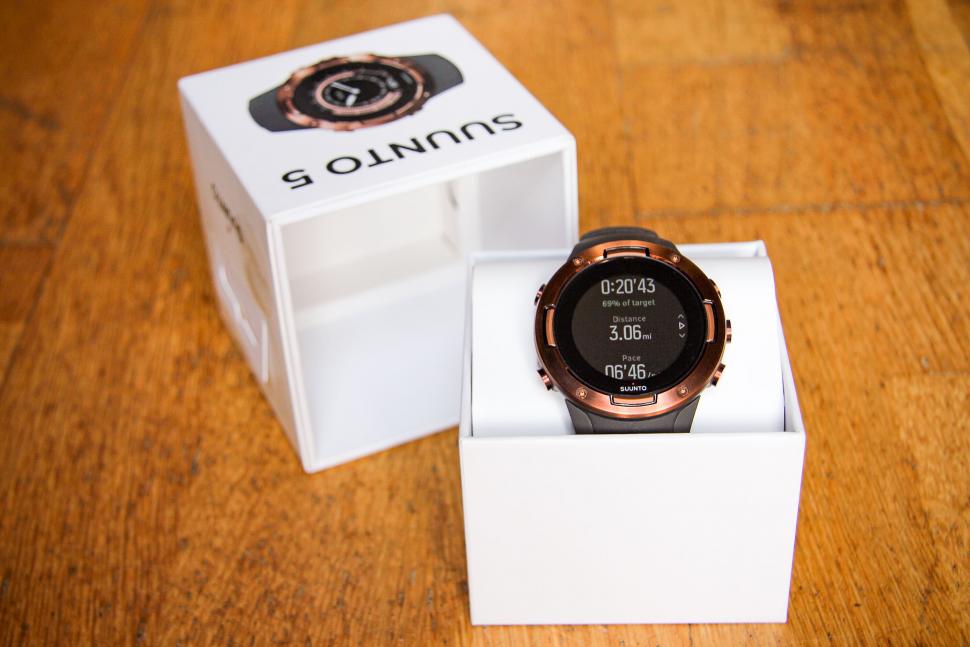

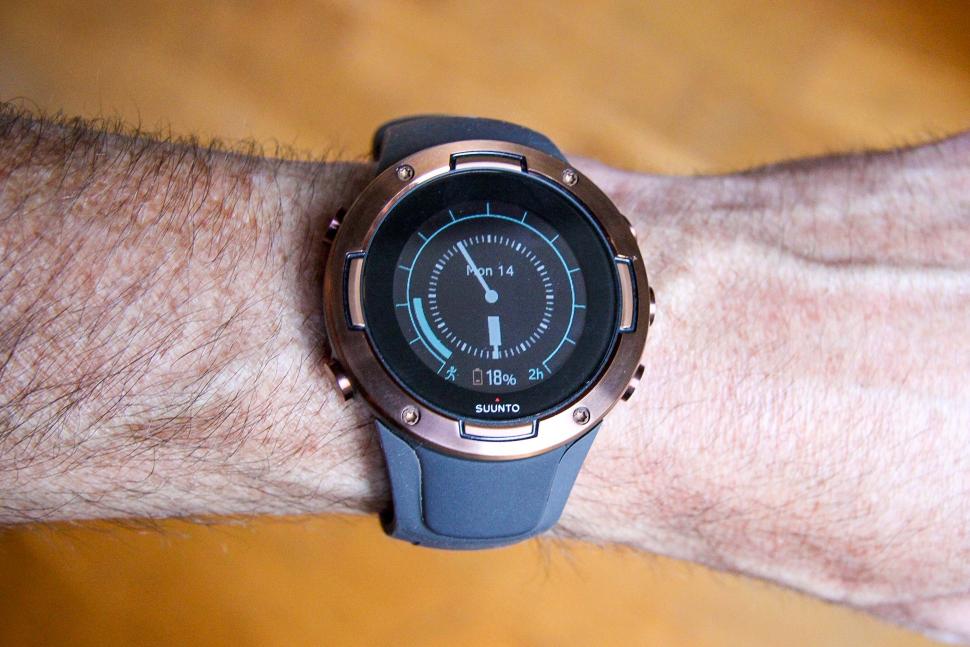

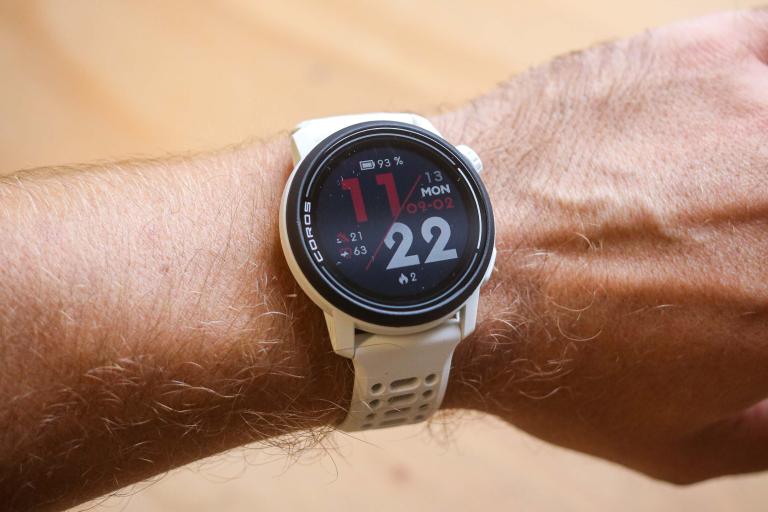
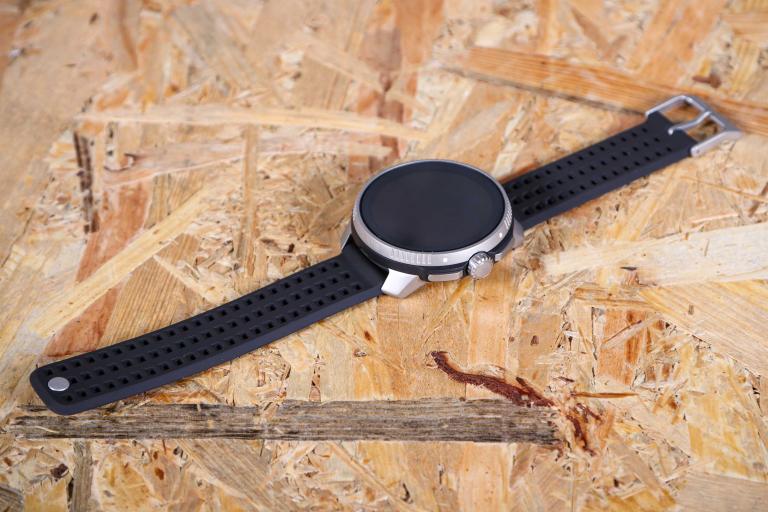
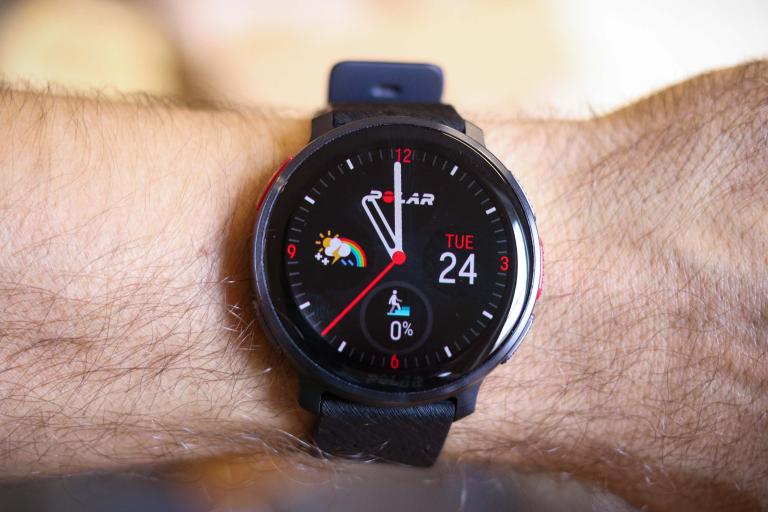

Add new comment
1 comments
Wrist-based optical HR measurement is difficult, particularly on-bike. I got best results with my old Mio one by wearing it on the inside/underside of my wrist, but even that was pretty accurate. No such issues with the Scosche arm-strap one I've got now - that goes under my jersey in the inside of my bicep. Means it's tucked away out of the wind and also shaded.